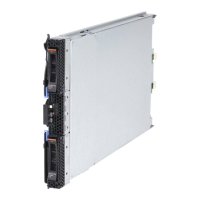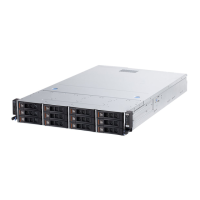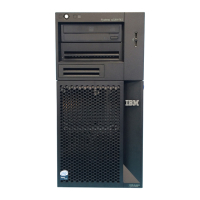86 IBM BladeCenter PS700, PS701, and PS702 Technical Overview and Introduction
using their entitlement, an uncapped partition can use additional processing units if its
entitlement is not enough to satisfy its application processing demand.
Weight
The weight (preference) is in the case of an uncapped partition.
Virtual processors
The minimum, desired, and maximum number of virtual processors. A virtual processor is
a depiction or a representation of a physical processor that is presented to the operating
system running in a micro-partition
The POWER Hypervisor calculates a partition’s processing power based on minimum,
desired, and maximum values, processing mode and on other active partitions’ requirements.
The actual entitlement is never smaller than the processing units desired value but can
exceed that value in the case of an uncapped partition and can be up to the number of virtual
processors allocated.
A partition can be defined with a processor capacity as small as 0.10 processing units. This
represents 0.1 of a physical processor. Each physical processor can be shared by up to 10
shared processor partitions and the partition’s entitlement can be incremented fractionally by
as little as 0.01 of the processor. The shared processor partitions are dispatched and
time-sliced on the physical processors under control of the POWER Hypervisor. The shared
processor partitions are created and managed by the HMC or Integrated Virtualization
Management.
Partitioning maximums on the POWER7-based blades is as follows:
The PS700 can have four dedicated partitions or up to 40 micro-partitions
The PS701 can have eight dedicated partitions or up to 80 micro-partitions
The PS702 can have 16 dedicated partitions or up to 160 micro-partitions
It is important to point out that the maximums stated are supported by the hardware, but the
practical limits depend on the application workload demands.
The following list details additional information about virtual processors:
A virtual processor can be running (dispatched) either on a physical processor or as
standby waiting for a physical processor to became available.
Virtual processors do not introduce any additional abstraction level. They are only a
dispatch entity. On a physical processor, virtual processors run at the same speed as the
physical processor.
Each partition’s profile defines CPU entitlement, which determines how much processing
power any given partition should receive. The total sum of CPU entitlement of all partitions
cannot exceed the number of available physical processors in the pool.
The number of virtual processors can be changed dynamically through a dynamic LPAR
operation.
Processor mode
When you create a logical partition, you can assign entire processors for dedicated use, or
you can assign partial processor units from a shared processor pool. This setting defines the
processing mode of the logical partition.
Figure 3-3 shows a diagram of the concepts discussed in the remaining sections.

